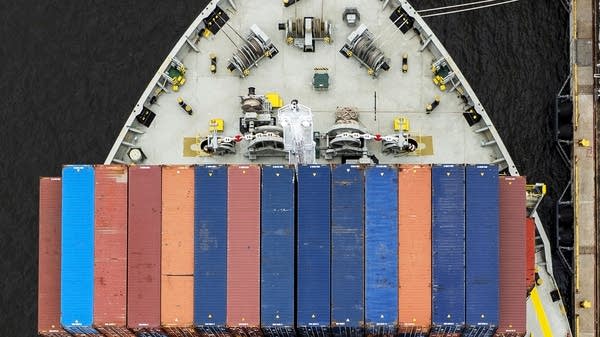Now that the Dali has moved, will business in the Port of Baltimore return to normal?
The Coast Guard expects to allow the same size and kinds of cargo ships to come into the port that were able to prior to the bridge collapse.

Nearly two months after it struck the Francis Scott Key Bridge, the container ship the Dali was moved out of the waterway that leads to the Port of Baltimore on Monday. Ship traffic in and around the wreckage of the bridge had been largely stalled in recent weeks, and Baltimore’s port economy took a major hit. But with the Dali moved, the Coast Guard expects to allow the same sizes and kinds of cargo ships to come into the port that were able to prior to the bridge collapse.
Sugar, cars, tractors and containers full of other goods are all expected to return on a regular schedule to Baltimore’s port.
“It seems like the cargo is going to be rolling back in,” said Scott Cowan, president of a local chapter of the International Longshoremen’s Association.
Longshoremen move cargo on and off ships, and about 1,800 of those workers have been out of work here since the bridge collapsed. But Cowan said that’s changing.
“We’ve got a good looking ship schedule for the next month or two,” he said.
Parts of the port still feel empty, including the Baltimore location for Trans American Trucking & Warehouse. Owner Craig McGraw, who’s also the company’s vice president of sales and marketing, said many of his clients decided to ship to other ports, like Norfolk, Virginia, and Savannah, Georgia, while Baltimore was inaccessible. He’s concerned that business won’t return.
“If everything’s going well at the new port, are they going to turn around and come back to Baltimore to go through that whole process again?” McGraw said.
But Baltimore has some advantages. It’s farther inland than any other port on the East Coast, which means if cargo arrives here, it doesn’t have to travel as far on land to get where it’s going.
Phil Evers, a professor of supply chain management at the University of Maryland Robert H. Smith School of Business, said he thinks that’ll bring a lot of shipments back “simply because it’s typically a lot cheaper to move a container by water than it is by either truck or rail.”
It’s not just containers that are coming back, but passengers too. Cruise ships are returning. Carnival announced it has a ship coming into the port within the next week. (It had temporarily moved its Baltimore operations to Norfolk.)
Evers said there are some positive things that could come out of the disaster: As Baltimore studies rebuilding the bridge, it could look into creating one that allows for a wider shipping channel, “so you could have more traffic coming in and out,” he said.
Evers also said any new bridge would likely be state of the art in both design and construction, which means engineers could think about how it might withstand impacts in the future.













